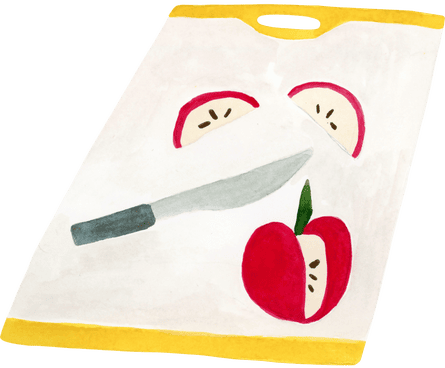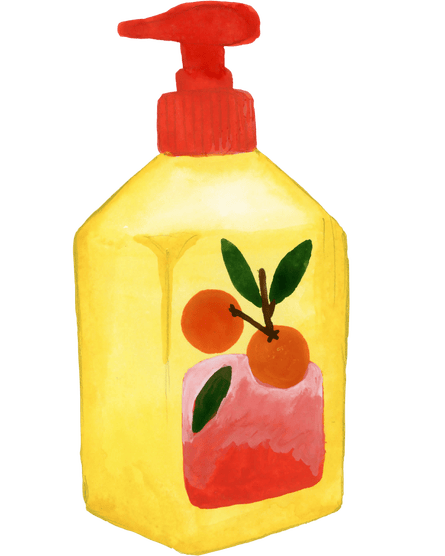
Chemicals are the invisible guests in our kitchens. You can’t see them but they are everywhere.
Simply making a meal can be a toxic minefield. Dangerous chemicals lurk in just about every step of the prep: PFAS “forever chemicals” in nonstick cookware, bisphenol in plastic containers, lead in ceramics, arsenic in pans, formaldehyde in cutting boards and the list goes on.
Food safety regulators are accused of failing to protect the public from chemicals in kitchens with loophole-ridden laws and inadequate response to threats. Meanwhile, some companies conceal their use of harmful substances or misleadingly market unsafe goods as safe. Even well-intentioned businesses can unwittingly add toxins to their products.
Regular exposure to the galaxy of chemicals we encounter in our daily lives poses a potential health hazard. About 90,000 human-made chemicals now exist, and we simply don’t know how daily exposure to them affects our health. Some precaution is reasonable and the kitchen is a good place to start. But navigating the pitfalls is extremely difficult.
Broadly speaking, there are a few good rules of thumb:
-
For almost every plastic kitchen product, there is a safer wood, borosilicate glass, or stainless steel alternative, though those come with caveats.
-
Be wary of nonstick coatings, which are often composed of substances that haven’t been thoroughly studied.
-
Be skeptical of marketing words such as “eco”, “green” or “nontoxic” that have no legal definition.
-
Check independent analyses and always do your own research. Some food safety bloggers test for toxins like heavy metals or PFAS in products that regulators don’t check, which can provide useful information.
Armed with years of knowledge from reporting on chemical pollution for the Guardian, I have identified kitchen products that are low risk and largely free of toxins.

Cutting boards
About a decade ago, I replaced my plastic cutting board – since plastic can contain thousands of chemicals – with one made of bamboo that I assumed was less toxic. But I later discovered that bamboo is often made of multiple wood pieces assembled with glue that contains formaldehyde, which can cause rashes, eye irritation, changes in lung function and might be a carcinogen.
Though bamboo boards produced with “safe” glue exist, they can also be made with toxic melamine-formaldehyde resins that are linked to kidney problems, endocrine disruption and neurological problems. There is a greater risk of toxins leaching with higher temperatures and more acidic foods. Bamboo products now often come with California government Proposition 65 warnings, saying that the product may contain some chemicals known to cause cancer.
When looking for a cutting board, try to find those made from a single piece of wood that has not been glued. But be aware that many boards are finished with food grade mineral oil. Some say it’s safe, but it is petroleum-based, and, depending on how well it is refined, mineral oil at high levels can be carcinogenic. Though many cutting board producers use mineral oil, some will substitute it for fractionated coconut oil or beeswax. Treeboard is among the few companies I found using a single piece of wood and safe finish.
Ceramics: dishware, coffee mugs, canisters
Federal law and the Food and Drug Administration allow lead to be used in ceramic cookware and tableware. It, and other dangerous heavy metals like arsenic, can be added to the ceramics’ glaze and pigmentation as long as the piece is properly fired and isn’t leaching toxins into the food at the time of manufacture.
However, stories of people being lead poisoned by their ceramics exist because some pieces aren’t glazed properly, while chips, scratches, and other wear and tear increase the risk of metals leaching.
You can search for “lead free” ceramics but keep in mind that it might not always be the case. Lead Safe Mama, a lead safety site run by Tamara Rubin, uses XRF devices to test for heavy metals and other toxins. Her findings have cast doubt on some companies’ lead-free claims.
Perhaps the safest option is to phase out ceramics and replace them with dishware and mugs made of glass.
Pans, pots and cookware

Several years ago, I ditched my Teflon frying pans, made with toxic PFAS that can leach into food, for the popular, enamel cast iron cookware that seemed safe because it tends not to be made with nonstick coatings.
But several food and lead safety bloggers have revealed that lead, arsenic and other heavy metals are often used in the pans’ glaze, or as brightening agents to enhance colors. Some companies may market products as free of heavy metals, which suggests that the toxins aren’t in the entire product, but it may simply mean the toxins didn’t leach at the time of manufacture, or that the lead is not in a surface that touches food. But chips, scratches and other wear can cause heavy metals to leach into food.
Many pans are marketed as “safe” or “green” or “nontoxic”, but there’s no legal definition for those terms and some companies capitalize on the uncertainty. Products can be marketed as “Teflon-free” or “PFOA-free”, but testing has found some still contain the chemicals. Also, PFOA and Teflon are only two types of PFAS, thousands exist. When trying to avoid Teflon, look for pans marketed as “PFAS-free”, “PFC-free” or “PFA-free”.
My toxin-free workhorse is a SolidTeknics Noni skillet made with high quality, ferritic stainless steel containing low levels of nickel, a metal that can trigger allergies and is potentially toxic at high levels. It’s also made of one seamless steel piece instead of multiple components and materials that can contain heavy metals.
My Made-in carbon steel pan also seems to be free of toxins and functions similarly to non-enameled cast iron pans, which are another generally safe option. Some glass pans are also clean, and for those who regularly cook, a good strategy is to buy several pans made from different materials to prevent daily exposure to a potential toxin.
Pots and saucepans have many of the same problems as pans. My eight-quart HomiChef stock pot is made with a high quality, nickel-free stainless steel, and seems to be toxin-free.
Rubin’s testing has found lead and other heavy metals in some crock pots. However, the levels in some brands are low. Her testing found the Instant Pot had lead in some components, but not those that touch food.
Coffee makers
Try to avoid any plastic pieces when making coffee because the material can contain thousands of chemicals that could leach, especially when in contact with hot, acidic substances, like coffee.
Most electric coffee makers are largely made of plastic, but I use a French press. This is the only glass press that I’ve been able to find that doesn’t have a plastic filter on the lid. Another good option is the glass Chemex pour-over brewer, which is also free of stainless steel components that can contain nickel. I also use a glass kettle instead of stainless steel to avoid the leaching of any nickel, a commonly used metal in stainless steel.

Water purification system
I use a Berkey activated carbon filtration system because it claims to remove a wide range of chemicals, bacteria, metals, PFAS and other contaminants. Berkey has generated some controversy because it has not gotten an NSF/ANSI certification, the federal government’s safety and performance seal for consumer filters.
The company instead posts independent third-party testing for more contaminants than those covered by NSF/ANSI testing but without the certification, several Berkey filters can’t be sold in California or Iowa.
Reverse osmosis systems are perhaps the most effective water purification systems, especially when it comes to PFAS, but they also waste a lot of water and can eliminate minerals.
Utensils
Plastic spatulas, tongs and other utensils are common but can contain thousands of chemicals that could migrate into food, especially when subjected to heat or acidity. Most of my utensils are now stainless steel or wood, which are generally safer, though be wary of bamboo utensils with formaldehyde glue, or those made with toxic melamine-formaldehyde resin.

I look for utensils made from a single piece of hardwood and try to find those that are either unfinished or treated with a safe finish, like beeswax or fractionated coconut oil.
Food storage
I’ve replaced most of my plastic containers, sandwich baggies and dry food canisters with glass. Plastic can contain thousands of chemicals that can leach, and they are not biodegradable. In the long run, glass containers or canisters are far cheaper.
Parchment/wax papers
Many wax paper companies use petroleum-based paraffin wax and bleach the paper with chlorine, but some brands, such as If You Care, use unbleached paper and soy wax.
Similarly, some parchment papers are treated with toxic PFAS or bleached with chlorine. If You Care’s parchment paper is unbleached and doesn’t contain PFAS. The Mamavation blog looked at five brands tested by an EPA-certified laboratory and found two contained PFAS.
Aluminum foil
Testing that I commissioned found low levels of PFAS on “non-stick” Reynolds Wrap. PFAS may be used as a nonstick agent or as a lubricant in the manufacturing process that sticks to all aluminum foil, and aluminum is considered a neurotoxin that can leach into food. A better alternative are glass containers, which in most cases do not have any kind of toxins in them.

Soap, disinfectant and other cleaning supplies
For washing dishes and disinfecting surfaces, I use Dr. Bronner’s Sal Suds, which uses nontoxic ingredients and no fragrances. The industry uses more than 3,000 chemicals to scent products. A consumer group has flagged at least 1,200 of those as being chemicals of concern.
Essential oils, meanwhile, are sometimes stored in containers made with PFAS before they’re added to final consumer products like soap. The chemicals have been found to leach into liquids stored in such containers. Dr. Bronner’s says it uses PFAS-free plastic bottles, and Sal Suds doesn’t have essential oils. For hand soap, I bypass plastic bottles by using Dr. Bronner’s fragrance-free bar hand soap.
A good source for learning about nontoxic soaps, cleaners and other kitchen cleaning products is the Environmental Working Group.
